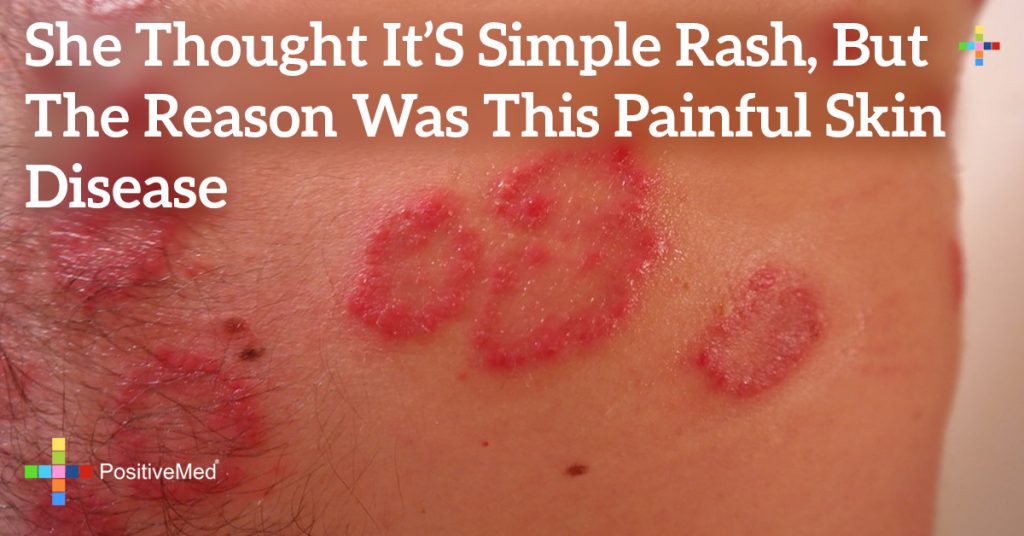
She Thought It’s Simple Rash, But the Reason Was THIS Painful Skin Disease
[nextpage title=”…”]
One skin disease that may be more common than realized produces large boils. They can be very painful, emit pus, and to make matters worse, they commonly appear in the armpits or groin areas. The boils are often recurring. The disease is called Hidradenitis suppurativa(HS).

The Causes of Hidradenitis Suppurativa
Hidradenitis suppurativa is a disease known to be connected to the hair follicles. For some reason, which so far is unknown, the follicle becomes blocked. Inflammation occurs, and then lumps may develop.
The actual cause of HS is not known. It is known that infection is not the cause, nor is poor hygiene. It is not an STD, and it is not contagious. People that have HS often have relatives who have problems with boils or HS.
The Symptoms of HS
The lumps, which may get as large as golf balls, tend to develop in areas where your skin rubs together, including your armpits, groin, buttocks, near the breasts, and on inner thighs. It will look like pimples at first, but then may progress to become more like boils.
As the area repeatedly becomes infected, tunnels will develop that connect under the skin. Applying pressure at one point may cause pus to erupt from an unrelated point elsewhere.
RELATED ARTICLE: How to Get Rid of Boils on Inner Thighs and Buttocks
The pus usually produces a strong odor, and the fluid can stain your clothes. The boils are painful when touched. Women will often find that the symptoms are worse during their periods.
Some people with HS are often depressed. They may also tend to separate themselves from other people – including their partners.
Risk Factors
Women are at a greater risk than men. About three times as many women get HS as compared to men. The symptoms typically start between the ages of 20 and 29.
In some people, the symptoms start around puberty. Although not certain, it is believed that hormones play a part in its development. Women tend to have an increase in the symptoms before their periods, but they often are reduced when pregnant or breast-feeding.
Other risk factors include:
• Being overweight
• Smoking (about 70%)
• Metabolic syndrome
[/nextpage] [nextpage title=”…”]
• An irregular response of the immune system
• Severe acne
• Crohn’s disease
• Inflammatory bowel disease
• Taking lithium
After having HS for a while, it is possible that some complications can result. This may include:
• Scars or changes in the skin
• Limited movement from sores or scar tissue
• Blocked drainage of lymph nodes from scar tissue
• Isolation from others
• Cancer (rare but possible).
Statistical Data
In the general populace, HS is believed to have affected about one percent of the people in the United States. Some surveys in the United States, however, indicate that it may be fewer than 100,000 people.
Because many doctors are not familiar with Hidradenitis suppurativa, it is quite possible that it is being underreported. In order to receive a proper diagnosis, a doctor who has treated it in the past should be seen. In many cases, HS may be simply identified as boils. This can lead to a delay in proper identification and treatment for years.
How to Treat Naturally
People who have Hidradenitis suppurativa need to take steps to reduce their symptoms. They can become severe and can hinder a normal or active lifestyle, so learning to cope is essential. In some cases, it can even become disabling. You can help prevent the condition from worsening by following several steps. This includes:
• Keep the affected areas dry
• Use a gentle soap for showers
• Do not use a washcloth on affected areas to prevent irritating the skin
• Avoid shaving the areas that are affected
• Wear loose clothing to avoid pressure on sores
• Use maxi pads or panty liners to soak up drainage.
• During your period, tampons are preferred to reduce moisture in area.
Remedies for HS
There is no cure for Hidradenitis suppurativa. Doctors will typically use medications and surgery to help control HS and reduce symptoms.
There are some things that you can do on your own. They include:
• Pain relievers to help cope with the pain
• Apply warm compresses to areas to cut down on swelling
• Stopping smoking can help reduce symptoms
• Weight loss can reduce the amount of friction in skin folds.
• Exercise to keep weight down, but take frequent breaks as needed.
You can reduce the pain and seriousness of your sores by taking steps to control their severity. This will enable you to continue to live a more active life. Get some friends, too, to help provide support and encouragement because depression can be a real factor.[/nextpage]







